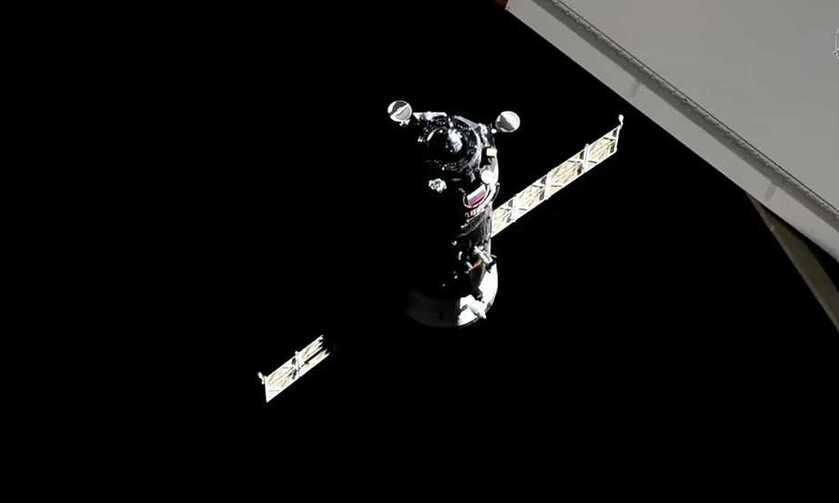MS-31 (Progress 92) cargo spacecraft autonomously docked with the space-facing port of the Poisk module of the International Space Station(ISS) at 2125 UTC on July 5. The unpiloted Roscosmos craft launched at 1932 UTC on July 3 on a Soyuz rocket from the Baikonur Cosmodrome in Kazakhstan.
The spacecraft was loaded with supplies for the Expedition 73 crew aboard the ISS, including 2,625 kilograms(kg) of cargo for the Station, including 1,205 kg of dry cargo, 950 kg of fuel, 420 kg of drinking water, and 50 kg of nitrogen.
MS-31 will remain docked for approximately six months before departing for re-entry into Earth’s atmosphere to dispose of trash loaded by the crew.
==================
Soyuz 2.1a rocket launched Progress MS-31 cargo spacecraft (designated Progress 92 by NASA) from Site 31/6 at the Baikonur Cosmodrome in Kazakhstan on 3 July 2025 at 1932 UTC, beginning a resupply mission to the International Space Station(ISS). The spacecraft is expected to dock with the zenith port of the ISS's Poisk module on 5 July at around 2127 UTC after a two-day free flight.
Progress MS-31 is painted in an unusual blue and white scheme as it was originally intended for a Glavkosmos commercial launch.
The spacecraft is carrying over 2,600 kg of cargo, including 1,205 kg of dry cargo such as food, clothing, and equipment for several science experiments, 950 kg of refueling propellant for the space station, 420 liters of potable water for the crew, and 50 kg of nitrogen to replenish the ISS atmosphere.
The Progress MS-31 mission will support the Expedition 73 crew aboard the ISS, delivering necessary supplies and equipment for scientific investigations and technology demonstrations, which will help prepare humans for future space missions and benefit humanity.
Progress 92(MS-31) will take the place of the Progress 90(MS-29) vehicle, which undocked from the same Poisk port on Tuesday (July 1) after a roughly seven-month stay. Progress 90 will burnt up on re-entry to the Earth's atmosphere -- the same fate that awaits Progress 92 about six months from now.
NASA maintains a separate naming convention for these missions, reflecting an organizational distinction rather than a difference in the spacecraft themselves.
The Russian segment of the ISS currently hosts other visiting vehicles, including Soyuz MS-27, and Progress MS-30 (Progress 91).
Soyuz MS-27 crewed spacecraft launched on 8 April 2025, carrying NASA astronaut Jonny Kim and Roscosmos cosmonauts Sergey Ryzhikov and Alexey Zubritsky to the ISS. MS-30 cargo spacecraft launched on Feb. 27, and is docked to Zvezda service module's aft port.
MS-31 mission is the second launch of the Progress MS spacecraft in 2025 and the third rocket launch from the Baikonur cosmodrome this year.
Progress is currently one of three cargo ships that deliver supplies to the ISS. The other two are private American vehicles: Northrup Grumman's Cygnus and SpaceX's Dragon.















